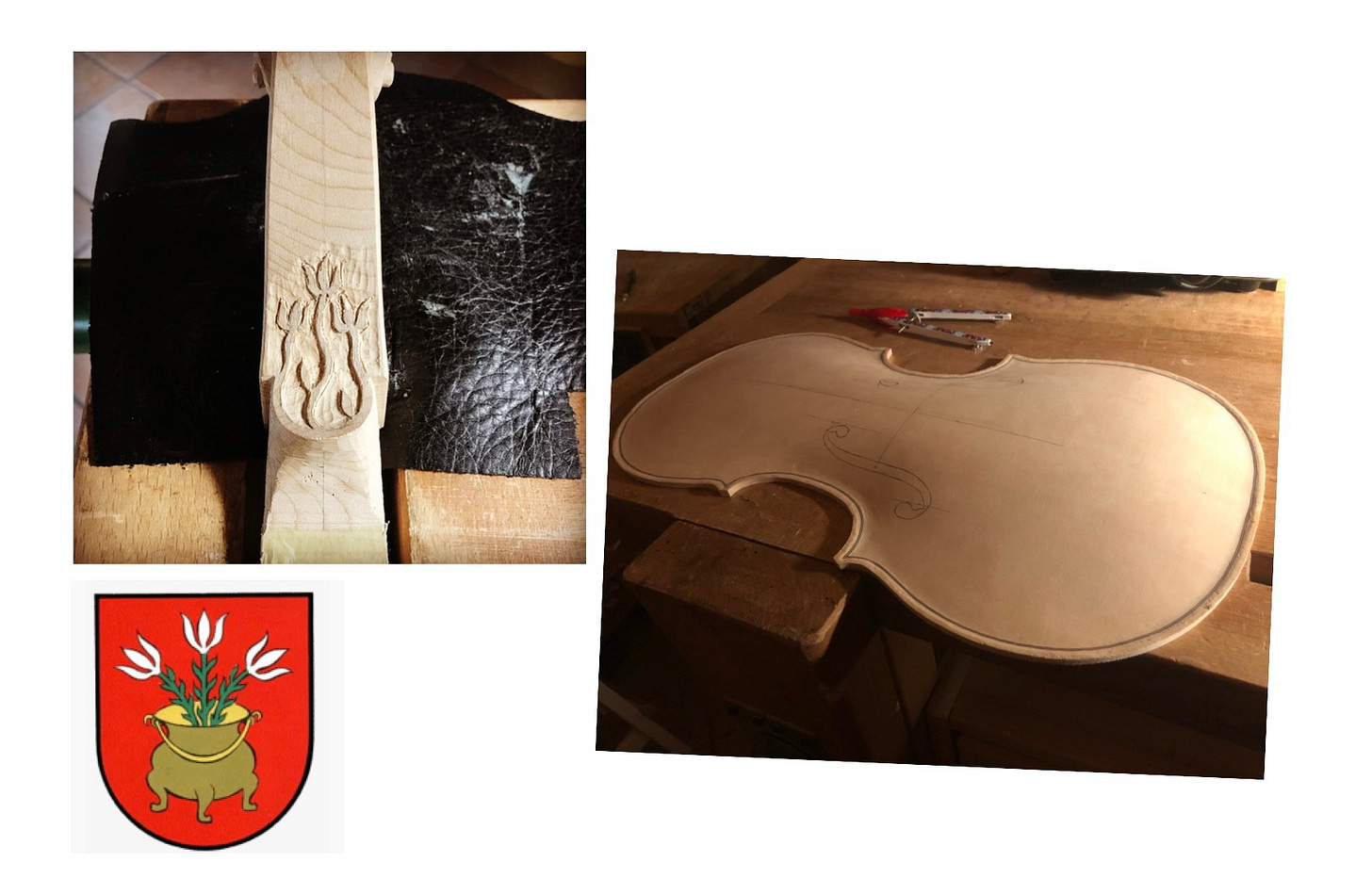J. S. Bach and his first solo for violoncello piccolo
22.10.1724 marks the first appearance of violoncello piccolo in Bach’s cantatas.
J. S Bach left us nine Cantatas featuring solos for violoncello piccolo.
The first in chronological order is the cantata BWV 180, which title roughly means “Shine, my Soul”, and was first performed on October 22nd 1724, specifically for the 20th Sunday after trinity. This was the second year in Leipzig for Bach.
The third number starts with a recitativo for the soprano, and when she goes into singing the chorale melody, the violoncello da Spalla supports her with 16ths notes arpeggios. It gives a feeling of joy, hope and divine light embracing the voice in response to the prayer.

You can find the score at this link, or clicking on the image below:
The range of this part is in a comfortable viola range, being the lowest note a C3, the lowest open string of the viola. However, Bach called for a violoncello piccolo, not a viola. It is also noticeable that on a score copied from the holograph by Bach, the part is not written in alto clef, but in treble clef, the standard violin clef, reading one octave higher. Like the common writing key used by tenors. So, it would have been so comfortable to be played by a violinist with a four strings little cello da spalla tuned GDAE, one octave below the violin. The C string of the cello is never used. And the G string, however, is used only for four notes, all Cs. 80% of the notes are on the first two strings, the gut ones. So clearly, Bach was looking for the brilliant timber, tenor sounding voice of the top strings of a little cello, and he was not looking for a goofy low range viola (sorry violists, but I am a violist too 🤭).
Strange but true, I couldn’t find a version on YouTube featuring a visible cello da spalla!! If you know one, please post it in the comments. Otherwise, try to be the first to record it!
The whole cantata also features two flutes (one traverisere) and two oboes (one da caccia), two violin parts, viola and continuo.
You can find more about Bach’s Cantatas in Koji Otsuki detailed work here.
Further readings:
News from da Spalla world
Last week I spotted this post on Instagram:
It’s a post by miniature-violin maker Maria Sandner and let me copy here the text:
Behind my miniature violin you ca see an octave violin. It was made in 1955 by Johann Reiter jun.
(1879-1959 in Mittenwald/ Germany). He also made excellent violin bows, lutes and developed his own rosin. l even know of a beautiful miniature violin he made in 1920 that is 12 mm bigger than my miniature violins.
Johann Reiter even write his own compositions for the octave violin. He was an honorary citizen of Mittenwald and one of the few Mittenwald violin makers with his own workshop at the time of the „Neuner and Hornsteiner" and „Baader & Co" pulishing houses.
I lived and worked in Johann Reiter's house for 20 years.
About the instrument octave violin:
The ribs height is 5,5 cm !!!
The body lenght is 42 cm
Due to the big body the instrument has a cello-like, very full sound character.
It is tuned one octave lower. The high ribs, however, make the instrument somewhat more difficult to play. And yet this special feature makes the octave violin with this beautiful deep sound a very unique instrument.
😜 doesn’t this sound familiar?
Updates from our workshop
This week I completed the back of my violoncello da spalla and I turned to the scroll again. I want to decorate the back of it with a woodcarving of the three lilies featured in my logo, which comes from the shield of Meltina, our village. It’s my first very shy attempt in woodcarving, but so far so good.
Alessandro is about to cut the ff holes!
Featured video of the week
Speaking about cantatas, with or without the cello piccolo obbligato, enjoy this beautiful aria from BWV 22. Sigiswald Kuijken with the Bachsolisten Seoul, in 2013.









